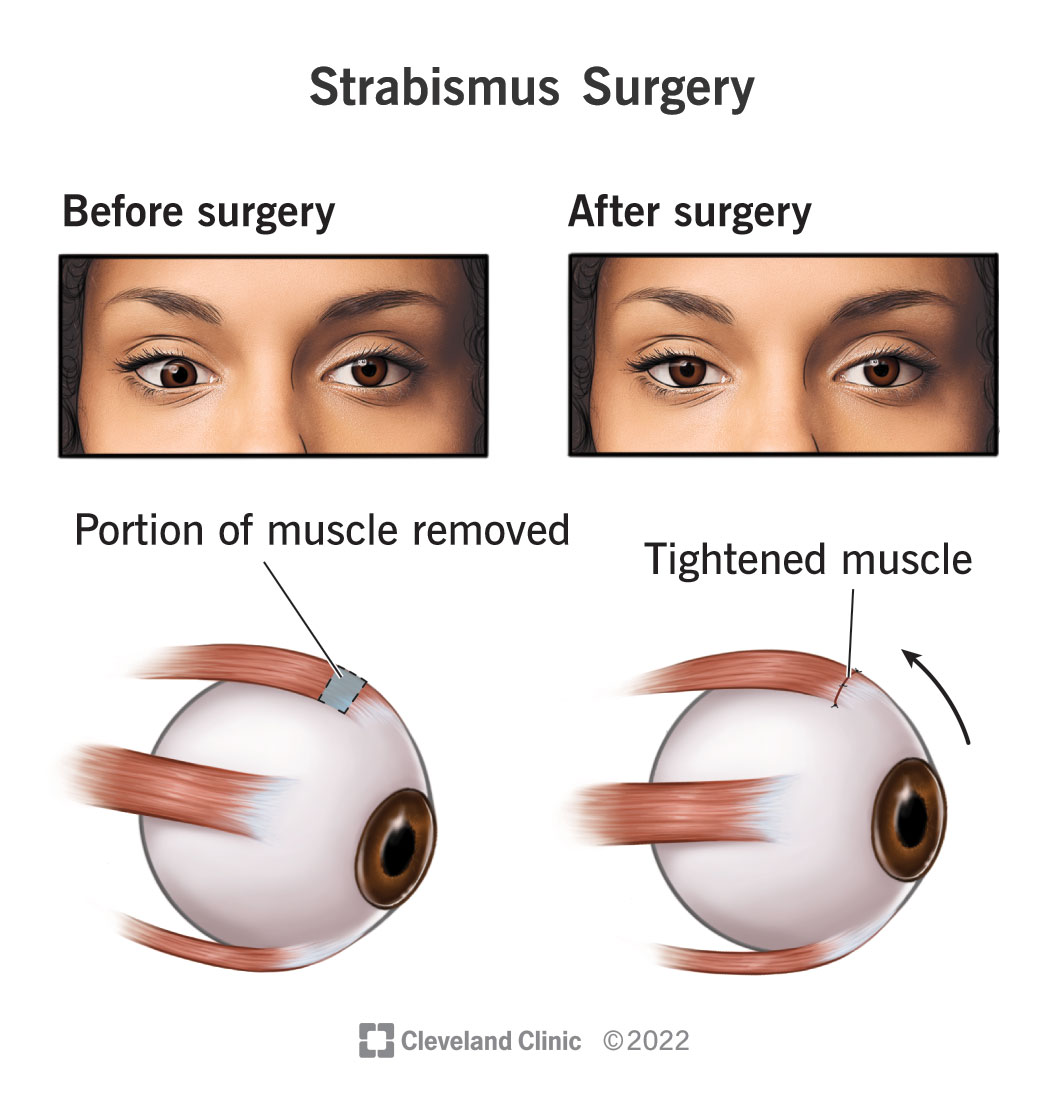Strabismus surgery, or eye muscle surgery, treats misaligned eyes that haven’t responded to other treatments. Your surgeon may shorten or tighten the muscles by cutting them or folding them over. In some cases, your surgeon may move the muscle to make it looser.
Advertisement
Cleveland Clinic is a non-profit academic medical center. Advertising on our site helps support our mission. We do not endorse non-Cleveland Clinic products or services. Policy

Strabismus surgery is eye muscle surgery to treat misaligned eyes (strabismus). This procedure makes your eye muscles either tighter or looser and aligns the position of your eyes so they’re centered and can work together.
Advertisement
Cleveland Clinic is a non-profit academic medical center. Advertising on our site helps support our mission. We do not endorse non-Cleveland Clinic products or services. Policy
About 5% of the population has strabismus. If your eyes are misaligned, and other treatments haven’t worked, an eye care provider may suggest strabismus surgery. Most often, children have strabismus surgery, but adults can have it, too.
You may need eye muscle surgery if you have:
You can have strabismus surgery on one or both eyes. Bilateral strabismus surgery is the term for when you have the surgery on both eyes.
Advertisement
Before surgery, your provider will want to know:
At your pre-anesthesia visit, the provider will tell you when to stop eating and drinking before surgery. Usually, you’re not supposed to take anything by mouth after midnight. They’ll also tell you if you need to stop taking any of your medications before the surgery.
You’ll have another eye exam to clarify which muscles need to be changed.
You’ll get medicine through a vein, or intravenously (IV). All children and most adults will get general anesthesia. Some adults may get eye numbing and light sedation. Other things you can expect include:
You’ll go to a recovery room after surgery. Your team will keep monitoring your vital signs until you go home.
A responsible adult will need to drive you home and stay with you for 24 hours. You may need to rest and take it easy for up to a week.
Your provider will prescribe eye drops or ointment for you to take at home.
Your provider may recommend acetaminophen, or sometimes oral nonsteroidal anti-inflammatory drugs (NSAIDs) like ibuprofen, for pain.
Ask your provider for information about what you should look out for after surgery and when you would need to call them.
Strabismus surgery can improve the way your eyes work together with stereo (3D) vision. This is especially true for children.
Having strabismus surgery corrects alignment but may not improve vision. However, many people who’ve had the surgery think the surgery is worth it because they have improved self-confidence and a better appearance.
Strabismus surgery is very safe, but all operations have risks. Risks or complications of strabismus surgery include:
Advertisement
You’ll need anywhere from a few days to weeks of rest after your surgery. Your eyes could be red for weeks and may feel sore or scratchy. They won’t fully heal for about three to 12 weeks.
Don’t drive until your provider tells you that it’s OK to do so.
Don’t go into swimming pools, saunas or hot tubs for two weeks after the procedure. This will reduce your chances of infection.
Contact your healthcare provider if you have:
You may have double vision for a few days after strabismus surgery. It can take longer than that for some people. Contact your eye care provider if you have concerns about double vision after surgery.
You may need more than one surgery to correct strabismus. This is more often true with children who have the surgery.
Yes, you’ll still need to wear your glasses after surgery. Strabismus surgery doesn’t typically change your glasses prescription and won’t change the clarity of your vision.
Strabismus, often called crossed or wandering eyes, happens when your eyes don’t line up correctly. Strabismus can affect the way your eyes move in any direction. An eye care provider may suggest you have surgery to correct the alignment when other measures don’t work. The surgery is more than just cosmetic and is generally very safe. Many people who’ve had the surgery appreciate increased self-confidence.
Advertisement
Cleveland Clinic’s ophthalmologists and optometrists have the highest training available. We provide exams, vision correction and care for many eye conditions.

Last reviewed on 11/29/2022.
Learn more about the Health Library and our editorial process.